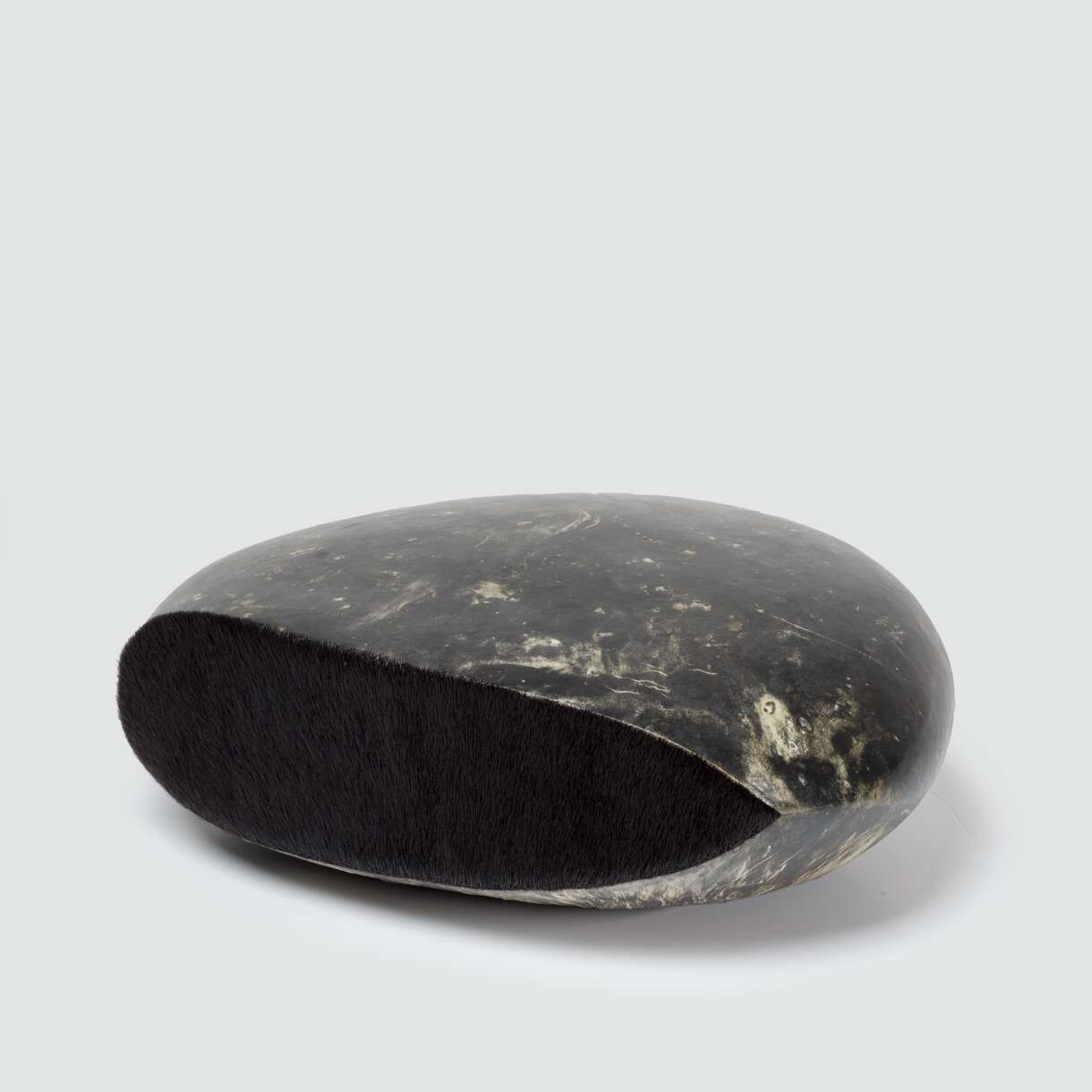
Rose Marie Huuva, Ijár, 2005. © Rose Marie Huuva/Bildupphovsrätt 2025
Ijár, 2005
Rose-Marie Huuva
Through her experiments within duodji, Rose-Marie Huuva has brought a long tradition of knowledge into contemporary art. Curator Matilda Olof-Ors talks about the acquisition.
Runtime: 02:55
Matilda Olof-Ors: My name is Matilda Olof-Ors, and I work as a curator with responsibility for the older part of the Swedish and Nordic collection of sculpture and painting. This part of our collection comprises about 3,000 artworks, with the most recent dating from 1974.
I am delighted that we were able to acquire Rose-Marie Huuva’s sculpture Ijár from 2005 in 2022.
Rose-Marie Huuva is a leading voice of her generation of Sámi artists. For more than 50 years, she’s been active as a visual artist, poet and author, as well as within duodji—a Sámi visual and aesthetic tradition where knowledge is transferred from one generation to the next. Huuva has participated in numerous exhibitions across the Nordic countries, as well as in Japan, the United States, and Panama, but she wasn’t previously represented in Moderna Museet’s collection.
Acquisitions are usually preceded by studio visits where we meet with the artists to look at and discuss various alternatives together. In the lead-up to the acquisition of this sculpture, all of it had to take place online, since the pandemic prevented me from travelling to Kiruna, where the artist lives.
Huuva often works with organic materials, like reindeer hide. Drawing on her deep knowledge of duodji, she’s developed a unique technique for sculpting the material. In Huuva’s work, the reindeer hide takes on new characteristics and looks entirely different. At a first glance, the rounded, sculpted shape resembles a hard, heavy, shiny rock. One side is darker, a gleaming, deep black. This surface, made from seal hide, seems to open onto an empty space—into infinity.
The artist’s choice of materials and the strict rules for trade with seal hide (which govern Sweden and all other EU countries) meant that we had to submit samples of the material for analysis. The rules required us to document that the work wasn’t made from a protected seal species before we acquired it—and it was ultimately cleared.
The work of adding new artworks to our collections constantly brings a contemporary lens to what our predecessors chose to acquire and not to acquire. It also gives us a chance to supplement those choices. Future generations working at the museum will, in turn, need to do the same thing with the acquisitions we make today.